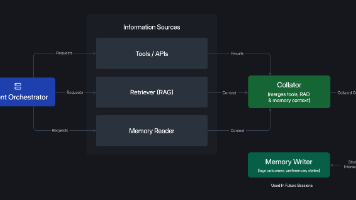如何使用asyncio库
asyncio是Python标准库,用于单线程并发编程,基于协程、事件循环和非阻塞I/O。核心组件包括事件循环、协程、任务和Future对象。适用于I/O密集型任务(如网络请求、数据库操作),通过async/await语法实现异步执行。支持任务并发、超时控制、队列等高级功能。使用时需避免同步阻塞代码,可配合uvloop提升性能。典型应用场景包括高并发网络服务、异步数据库访问等。通过合理调度能显著提
asyncio简介
asyncio是Python的标准库,用于编写单线程并发代码,基于协程(coroutines)、事件循环(event loop)和非阻塞I/O操作。它适用于I/O密集型任务(如网络请求、文件读写),而非CPU密集型任务。
核心组件
事件循环(Event Loop)
事件循环是asyncio的核心,负责调度和执行协程任务。通过asyncio.run()或直接管理事件循环对象启动。
协程(Coroutines)
使用async def定义的函数称为协程,可通过await暂停执行,等待其他协程或I/O操作完成。
任务(Tasks)
协程通过asyncio.create_task()包装为任务,由事件循环调度执行。任务可追踪协程状态。
Future对象
低级可等待对象,表示异步操作的最终结果,通常由任务封装。
基本用法
定义协程
import asyncio
async def hello():
print("Hello")
await asyncio.sleep(1)
print("World")
运行协程
asyncio.run(hello()) # Python 3.7+
并发执行任务
async def task_one():
await asyncio.sleep(2)
return "Task 1 done"
async def task_two():
await asyncio.sleep(1)
return "Task 2 done"
async def main():
task1 = asyncio.create_task(task_one())
task2 = asyncio.create_task(task_two())
results = await asyncio.gather(task1, task2)
print(results) # ['Task 1 done', 'Task 2 done']
高级功能
超时控制
async def long_running_task():
await asyncio.sleep(10)
async def main():
try:
await asyncio.wait_for(long_running_task(), timeout=5)
except asyncio.TimeoutError:
print("Task timed out")
队列(Queue)
生产者-消费者模式:
async def producer(queue):
for i in range(5):
await queue.put(i)
await asyncio.sleep(1)
async def consumer(queue):
while True:
item = await queue.get()
print(f"Consumed: {item}")
queue.task_done()
async def main():
queue = asyncio.Queue()
await asyncio.gather(producer(queue), consumer(queue))
同步原语
如锁(Lock)、信号量(Semaphore):
lock = asyncio.Lock()
async def safe_update():
async with lock:
# 临界区代码
pass
常见问题
阻塞代码破坏并发
避免在协程中调用同步阻塞函数(如time.sleep()),需使用asyncio.sleep()或loop.run_in_executor()。
事件循环策略
在Jupyter等环境中可能需要手动管理事件循环:
import nest_asyncio
nest_asyncio.apply()
适用场景
- 高并发网络请求(HTTP API、WebSockets)。
- 异步数据库驱动(如asyncpg、aiomysql)。
- 微服务间通信。
性能优化
- 使用
uvloop替代默认事件循环(非Windows平台)。 - 避免频繁创建/销毁任务,复用连接池。
通过合理设计协程和任务调度,asyncio可显著提升I/O密集型应用的吞吐量。
更多推荐
 已为社区贡献3条内容
已为社区贡献3条内容








所有评论(0)